EPS beads have become essential materials across construction, manufacturing, packaging, and insulation industries. Known for their lightweight structure and excellent thermal performance, these expanded polystyrene beads offer a versatile solution for countless applications. EPS use continues to grow as businesses seek efficient, cost-effective, and reliable materials that improve product performance and reduce overall project costs.
This ultimate guide explores everything you need to know about EPS beads—from how they’re made to the different types, densities, uses, and benefits they offer. Whether you are a manufacturer, builder, or product designer, understanding EPS beads will help you make smarter sourcing decisions and choose the best materials for long-term, sustainable performance.
What Are EPS Beads?
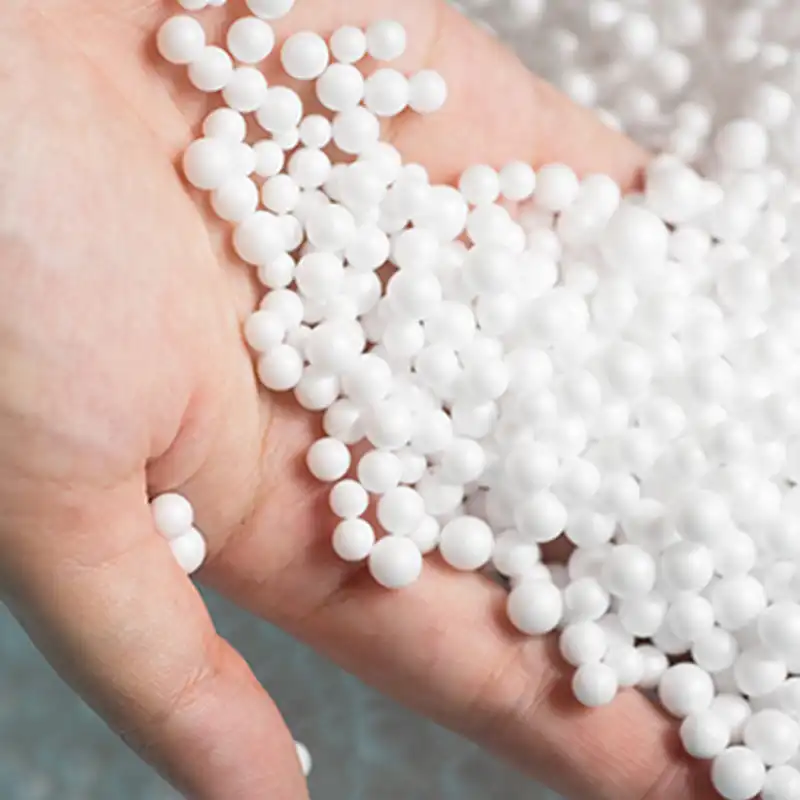
Expanded Polystyrene (EPS) beads are small, foam-like particles derived from the expansion of polystyrene resin.
Through a process involving heat and pressure, polystyrene resin expands into these beads, resulting in a lightweight material with exceptional insulation properties. EPS beads are often used as fillers, insulation material, or as components in various products.
Expandable Polystyrene Granule

Expandable Polystyrene (EPS) granules are tiny beads made from polystyrene, a thermoplastic polymer. These granules are commonly used in the production of various products such as packaging materials, insulation, and construction materials.
Here’s how the process typically works:
- Raw Material Preparation: Polystyrene resin is mixed with a blowing agent, usually a hydrocarbon such as pentane. This blowing agent is what enables the expansion of the granules when they are subjected to heat.
- Pre-expansion: The mixture of polystyrene resin and blowing agent is heated and then rapidly cooled, causing the blowing agent to vaporize and expand the polystyrene beads. This pre-expansion process results in larger, lighter beads.
- Aging: The pre-expanded beads are left to age for a period of time. This allows any residual pentane to dissipate and ensures uniform expansion when the beads are further processed.
- Molding or Shape Formation: The expanded beads are then molded into the desired shape using steam heat and pressure. This can be done in molds to create packaging materials or insulation boards, or it can be done in-situ to create void-fill packaging materials.
- Final Processing: After molding, the shaped EPS products may undergo additional processing steps such as cutting, trimming, or coating to meet specific requirements.
EPS granules are favored for their lightweight nature, excellent insulation properties, and versatility in molding into various shapes and sizes. They are widely used in industries ranging from packaging and construction to automotive and marine applications. Additionally, EPS is recyclable, making it an environmentally friendly choice for many applications.
Properties of EPS Beads
EPS beads possess several unique properties that contribute to their widespread use and popularity across various industries:
- Lightweight Nature: One of the most notable characteristics of expandable polystyrene beads is their lightweight composition. Despite their small size, EPS beads exhibit minimal density, making them easy to handle and transport. This property enhances their suitability for applications where weight is a concern, such as packaging and insulation.
- Excellent Thermal Insulation: EPS beads are highly regarded for their exceptional thermal insulation properties. The structure of expanding polystyrene beads consists of numerous air pockets trapped within the foam structure, which effectively resist heat transfer. This insulation capability makes EPS beads ideal for applications requiring temperature control, such as insulated packaging and building insulation.
- Resistance to Moisture and Chemicals: Another advantageous property of EPS beads is their resistance to moisture and chemicals. The closed-cell structure of EPS beads prevents the absorption of water, making them suitable for outdoor applications and environments with high humidity levels. Additionally, EPS beads demonstrate resistance to various chemicals, ensuring their durability and longevity in different conditions.
- High Compressive Strength: Despite their lightweight nature, EPS beads exhibit impressive compressive strength. This property allows EPS beads to withstand significant pressure and deformation without losing their structural integrity. As a result, EPS beads are commonly used in applications requiring load-bearing capacity, such as underfloor insulation and lightweight concrete mixes.
The lightweight design, thermal insulation capabilities, moisture resistance, and high compressive strength make expandable polystyrene beads a versatile and reliable material for a wide range of applications, from packaging and construction to arts and crafts.
EPS Bead Insulation
Expanded polystyrene (EPS) bead insulation is a type of insulation material made from expanded polystyrene beads. These beads are tiny, spherical particles that are typically manufactured using a process called suspension polymerization. In this process, liquid polystyrene is suspended in water, and then it’s expanded and molded into small expandable polystyrene beads by adding a blowing agent, usually pentane.
EPS bead insulation is known for its lightweight nature, excellent thermal insulation properties, and versatility in various construction applications. It is often used in both residential and commercial buildings to improve energy efficiency by reducing heat transfer through walls, roofs, and floors.
The key characteristics of EPS bead insulation include:
Thermal Insulation: EPS bead insulation provides effective thermal insulation by trapping air within its closed-cell structure. This trapped air acts as a barrier to heat transfer, helping to keep interiors warm in winter and cool in summer.
Lightweight: EPS beads are extremely lightweight, making them easy to handle and install. This characteristic simplifies transportation and reduces labor costs during construction.
Moisture Resistance: EPS bead insulation is resistant to moisture, preventing water absorption and maintaining its insulation properties over time. However, it’s important to properly install EPS insulation to avoid gaps or compression that could compromise its effectiveness.
Versatility: EPS bead insulation is available in various forms, including loose-fill expanded polystyrene beads, molded boards, and pre-formed panels. This versatility allows it to be used in various applications, such as cavity wall insulation, underfloor insulation, and insulating concrete forms (ICFs) for construction.
Cost-Effectiveness: EPS bead insulation is relatively inexpensive compared to other insulation materials, making it a cost-effective option for both new construction and retrofitting existing buildings.
Environmental Considerations: While EPS is a petroleum-based product, it is recyclable, and many manufacturers offer recycled EPS insulation products. Additionally, EPS bead insulation can contribute to energy savings by reducing the need for heating and cooling, thus lowering carbon emissions associated with energy consumption.
Advantages of EPS Beads
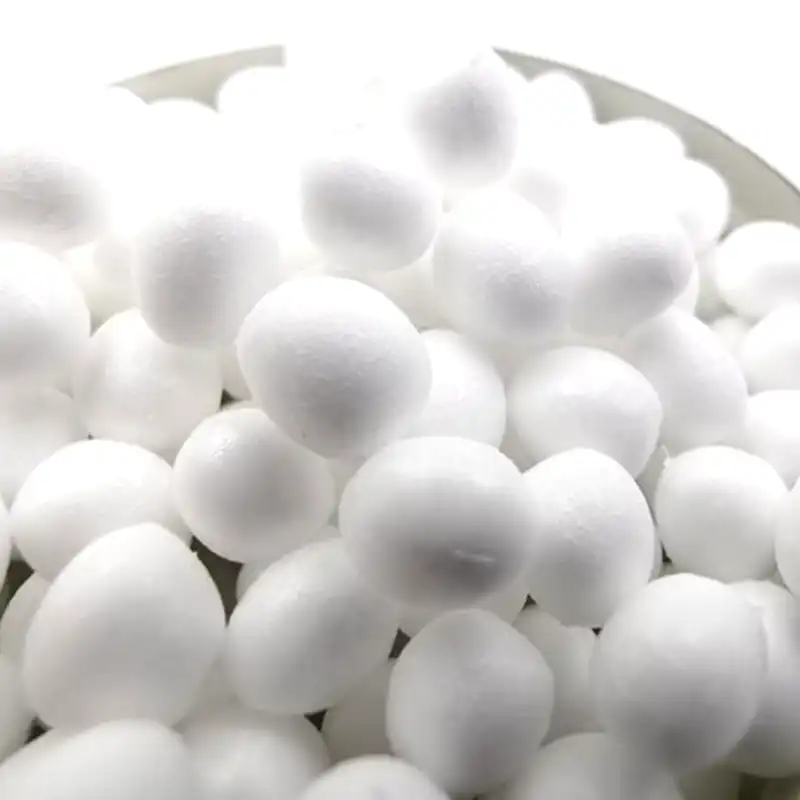
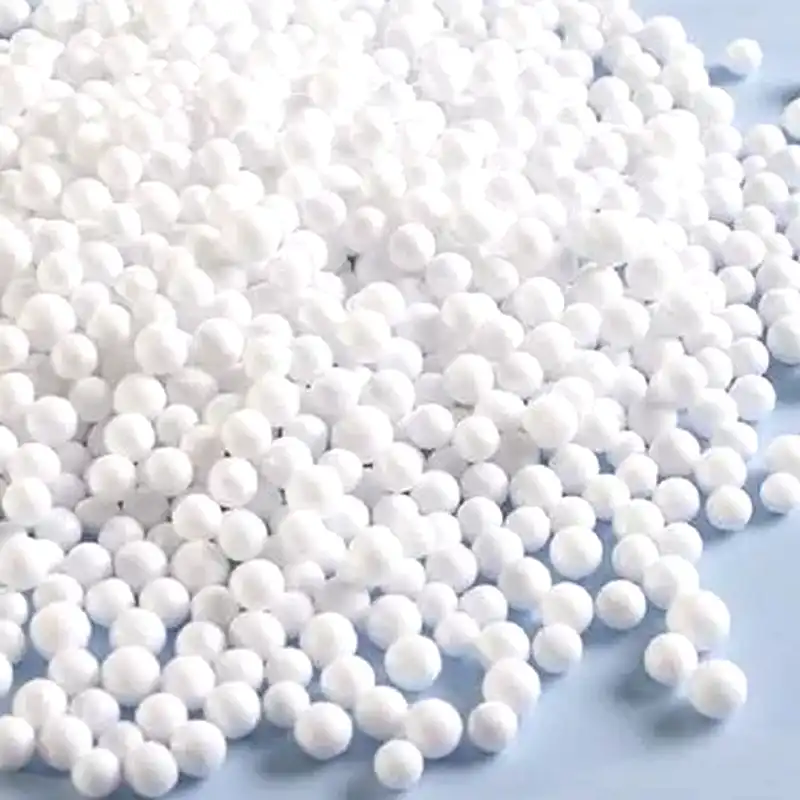

EPS beads offer numerous advantages that contribute to their widespread use and popularity across various industries. Some of the key benefits include:
- Superior Insulation Properties: EPS beads are renowned for their exceptional thermal insulation capabilities. The air pockets trapped within the foam structure of EPS beads create a barrier against heat transfer, making them ideal for applications requiring temperature control, such as insulated packaging and building insulation.
- Lightweight Composition: One of the most significant advantages of EPS beads is their lightweight nature. Despite their small size, EPS beads exhibit minimal density, resulting in lightweight packaging solutions and construction materials. This property not only reduces transportation costs but also minimizes the environmental impact associated with heavier materials.
- Versatility in Molding and Shaping: EPS beads can be easily molded and shaped into various forms to suit specific requirements. Whether it’s intricate packaging designs, customized insulation panels, or artistic sculptures, EPS beads offer flexibility and adaptability in manufacturing processes, allowing for creative freedom and customization.
- Cost-Effectiveness: Compared to alternative materials, EPS beads offer a cost-effective solution for a wide range of applications. Their lightweight composition reduces material costs and transportation expenses, while their insulation properties can lead to long-term energy savings in buildings and other structures. Additionally, the ease of molding and shaping EPS beads can lower production costs and increase manufacturing efficiency.
The superior insulation properties, lightweight composition, versatility in molding, and cost-effectiveness make EPS beads a preferred choice for various industries seeking efficient and sustainable solutions for packaging, construction, and other applications.
Applications of EPS Beads
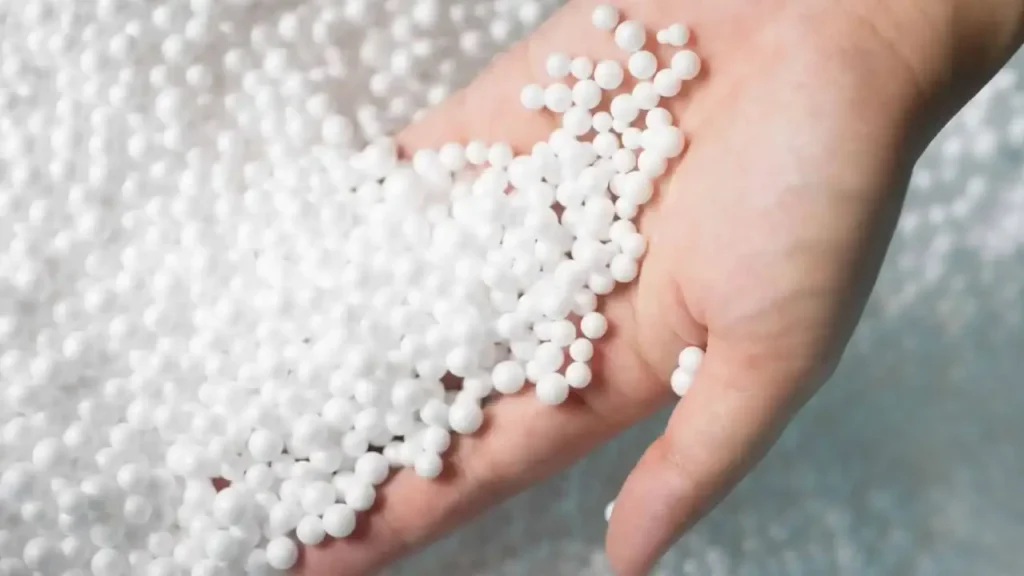
EPS beads find extensive applications across multiple industries, owing to their versatile properties and practical benefits. Some of the common applications of EPS beads include:
EPS Beads in Packaging
EPS beads are widely used in the packaging industry for their protective cushioning properties. They are commonly employed in:
- Shipping Packaging: EPS beads are utilized as fillers and protective cushions in packaging materials to safeguard fragile items during transit. Their lightweight nature and shock-absorbing capabilities help prevent damage to delicate products.
- Insulating Packaging: In the food and beverage industry, EPS beads are utilized to create insulated packaging solutions for perishable goods. These packaging materials help maintain consistent temperatures, preserving the freshness and quality of the contents during storage and transportation.
- Molded Packaging: EPS beads can be molded into custom shapes and sizes to create packaging inserts for electronics, appliances, and other sensitive equipment. The versatility of EPS beads allows for tailored packaging solutions that provide optimal protection for specific products.
EPS Beads in Construction
In the construction industry, EPS beads are valued for their insulation and structural support properties. They are utilized in various applications, including:
- Insulating Concrete Forms (ICFs): EPS beads are incorporated into insulated concrete forms to create energy-efficient building structures. The hollow cavities formed by EPS beads within the concrete provide superior thermal insulation, reducing heating and cooling costs for residential and commercial buildings.
- Lightweight Concrete Mixes: EPS beads are added to concrete mixes to create lightweight and insulating concrete solutions. These lightweight concrete mixes are used for thermal insulation, soundproofing, and filling voids in construction projects, offering enhanced durability and energy efficiency.
- Roofing Systems: EPS beads are utilized as insulation panels and void fillers in roofing systems to improve thermal performance and moisture resistance. The lightweight nature of EPS beads reduces structural loads on rooftops while providing effective insulation against heat transfer and moisture infiltration.
EPS Beads in Art and Crafts
Creative enthusiasts often incorporate EPS beads into art and craft projects due to their lightweight and moldable nature. Some common applications include:
- Sculpting and Modeling: EPS beads are used as sculpting materials for creating intricate designs and sculptures. Artists can easily shape and mold EPS beads into desired forms, allowing for detailed artwork and three-dimensional creations.
- DIY Projects: Hobbyists and DIY enthusiasts use EPS beads for various crafting projects, such as making decorative items, props, and costume accessories. The versatility of EPS beads allows for endless creative possibilities, inspiring individuals to explore their artistic talents and express their creativity.
- Art Therapy Activities: EPS beads are utilized in art therapy sessions and sensory activities to provide tactile stimulation and sensory experiences. The soft and lightweight texture of EPS beads offers a soothing sensory experience, promoting relaxation and stress relief for participants.
The diverse applications of EPS beads across packaging, construction, and arts and crafts highlight their versatility and utility in various industries. Whether it’s protecting fragile items during shipping, insulating buildings for energy efficiency, or unleashing creative potential in artistic endeavors, EPS beads continue to play a valuable role in enhancing efficiency, sustainability, and innovation.
Eco-friendliness of EPS Beads
Despite misconceptions surrounding their environmental impact, EPS beads offer several eco-friendly attributes and contribute positively to sustainable practices. Here are some key points highlighting the eco-friendliness of EPS beads:
- Recyclability: EPS beads can be recycled efficiently, contributing to waste reduction and resource conservation. Recycling initiatives involve collecting used EPS products and packaging, processing them into reusable materials, and incorporating them into new products. This closed-loop recycling process helps minimize environmental pollution and extend the lifespan of valuable resources.
- Energy Efficiency: The production of expanded polystyrene beads consumes relatively less energy compared to alternative materials. The lightweight nature of EPS beads reduces energy consumption during transportation and handling, leading to lower carbon emissions and environmental impact. Additionally, the thermal insulation properties of EPS beads contribute to energy savings in buildings and structures by reducing heating and cooling demands.
- Sustainable Manufacturing: EPS beads are manufactured using polystyrene resin, a byproduct of petroleum refining. The manufacturing process of EPS beads involves minimal water usage and generates minimal waste, promoting sustainable manufacturing practices. Furthermore, advancements in production technology have led to improvements in energy efficiency and emissions reduction, further enhancing the eco-friendliness of EPS bead production.
- Minimal Environmental Footprint: EPS beads have a minimal environmental footprint throughout their lifecycle. From production and use to disposal and recycling, EPS beads generate minimal environmental impact compared to alternative materials. Their lightweight composition reduces transportation costs and fuel consumption, while their recyclability ensures efficient resource utilization and waste management.
Recycling EPS Beads
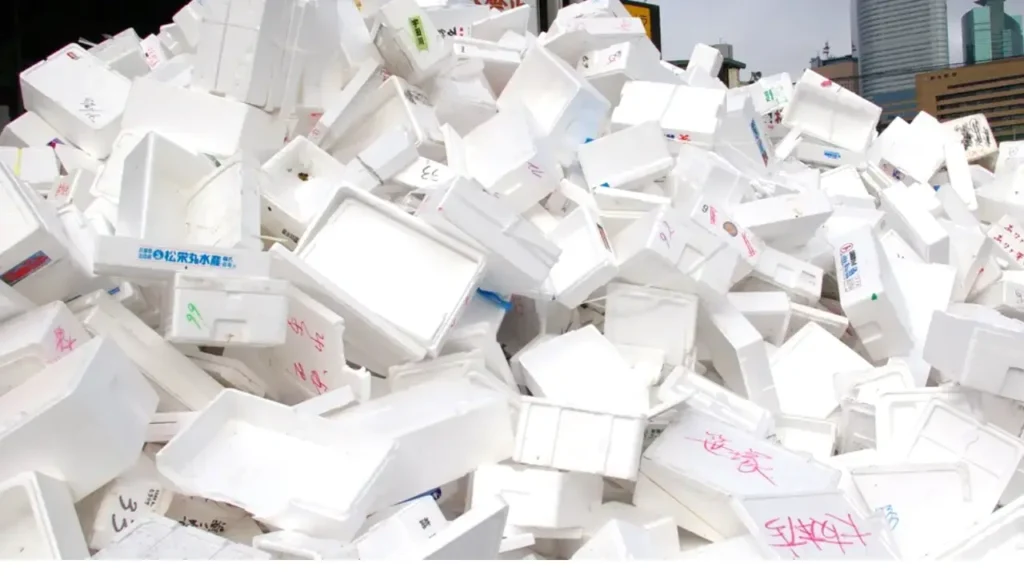
Recycling EPS beads plays a crucial role in reducing environmental pollution, conserving resources, and promoting sustainable waste management practices. Here’s an overview of the recycling process for EPS beads:
- Collection: Used EPS products and packaging, such as foam containers, packaging materials, and insulation panels, are collected from various sources, including households, businesses, and recycling centers. Collection efforts aim to gather EPS waste efficiently and divert it from landfills.
- Sorting: Upon collection, the EPS waste is sorted to separate clean EPS materials from contaminants such as dirt, debris, and other non-recyclable items. Sorting helps ensure the quality and purity of the recycled EPS materials, facilitating the recycling process.
- Compaction: The sorted EPS waste is compacted into denser forms to reduce volume and facilitate transportation to recycling facilities. Compaction equipment compresses the EPS waste into compacted blocks or bales, making it more manageable for transportation and processing.
- Processing: At recycling facilities, the compacted EPS waste undergoes processing to convert it into reusable expanded polystyrene beads or other recycled materials. The processing methods may vary depending on the recycling technology and equipment used, but generally involve shredding, melting, or granulating the EPS waste into smaller particles.
- Reprocessing: The shredded or granulated EPS waste is then reprocessed to produce recycled EPS beads or other recycled products. This may involve melting the EPS particles and reforming them into new EPS beads through extrusion or molding processes. Alternatively, the recycled EPS materials may be used as filler material or blended with other materials to create composite products.
- Quality Control: Throughout the recycling process, quality control measures are implemented to ensure the purity and integrity of the recycled EPS materials. Quality testing and inspection help identify and remove any contaminants or impurities, ensuring that the recycled EPS beads meet quality standards and performance requirements.
- Reuse and Application: The recycled EPS beads are then ready for reuse in various applications, such as packaging, insulation, construction, and manufacturing. Recycled EPS beads offer similar performance and properties as virgin EPS beads but with the added benefit of resource conservation and environmental sustainability.
By recycling EPS beads, we can minimize waste generation, conserve valuable resources, and reduce environmental impact, contributing to a more sustainable and circular economy. Public awareness, education, and support for recycling initiatives are essential in promoting the responsible recycling of EPS materials and maximizing their environmental benefits.
Conclusion
In conclusion, EPS beads remain one of the most versatile materials in modern manufacturing, construction, and packaging. Their lightweight structure, excellent insulation properties, and cost-effectiveness make them a reliable solution across dozens of industries. As technology advances, EPS beads continue to evolve, offering improved performance and sustainability.
Understanding how EPS beads are made, used, and selected helps businesses choose the right grade for their specific applications. Whether you work in molding, filling, construction, or large-scale production, choosing high-quality EPS beads ensures consistent results and long-term reliability. High-density and low-density options both bring unique advantages that support different project requirements.
If you’re looking for premium EPS beads at competitive wholesale prices, we’re here to help. Our factory offers consistent quality, fast delivery, and tailored supply solutions for global buyers. Contact us today to obtain high-quality wholesale EPS beads and establish a dependable partnership for your next project.
